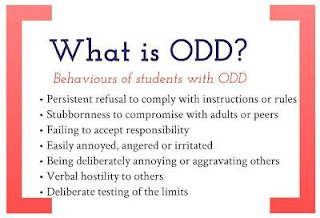Your child has decided that whatever you have asked them to do, they simply won’t do it. You’ve asked time and time again but they still refuse. It’s time to take action
Defiance is defined as the act of standing up to an opponent or authority. If you say that someone is defiant, you mean they show aggression or independence by refusing to obey someone
An example of defiance is a group of nurses walking out on the job and picketing against the hospital. As this relate to children growing up,how do we see this?
A defiant, hard-to-punish, and unresponsive child can make life at home an exercise in frustration for caring parents, who often struggle to understand their beloved antagonist’s motives.
It’s totally developmentally appropriate to be defiant,” explains American Academy of Pediatrics Fellow Dr. Phil Bouchard of Lincoln Pediatric Group, “Even in the 12-, 15-, and 18-month range.”
Reasons for defiance in Young children;
Bouchard; notes that kids keep looking for boundaries when the boundaries and expectations are inconsistent.That can cause more defiance because they just don’t know what to expect,” he says. “So kids keep kind of pushing out the boundaries further to find where they will get pushed back. They have to push further to find out where those boundaries actually lie.”
The Big Qiestion is, is It ODD?
When looking at your young child, it’s important to understand that for some, this period of defiance is just a phase that they will pass through as they mature. Other kids may meet the criteria for Oppositional Defiant Disorder (ODD), which is a persistent and frequent form of defiant behavior.
Examples of ODD include any time a child has a pattern of being angry and irritable, argumentative or defiant along with displays of vindictive behavior.
Symptoms
Sometimes it's difficult to recognize the difference between a strong-willed or emotional child and one with oppositional defiant disorder. It's normal to exhibit oppositional behavior at certain stages of a child's development.
How to Diagnose;
The Diagnostic and Statistical Manual of Mental Disorders (DSM-5), published by the American Psychiatric Association, lists criteria for diagnosing ODD. The DSM-5 criteria include emotional and behavioral symptoms that last at least six months.
Angry and irritable mood:
- Often and easily loses temper
- Is frequently touchy and easily annoyed by others
- Is often angry and resentful
Argumentative and defiant behavior:
- Often argues with adults or people in authority
- Often actively defies or refuses to comply with adults' requests or rules
- Often deliberately annoys or upsets people
- Often blames others for his or her mistakes or misbehavior
- Vindictiveness: Is often spiteful or vindictive
- Has shown spiteful or vindictive behavior at least twice in the past six months
ODD can vary in severity:
- Mild. Symptoms occur only in one setting, such as only at home, school, work or with peers.
- Moderate. Some symptoms occur in at least two settings.
- Severe. Some symptoms occur in three or more settings.
For some children, symptoms may first be seen only at home, but with time extend to other settings, such as school and with friends.
Communication Skills and Temperament
Young kids and toddlers have a limited vocabulary and become frustrated when they can’t articulate what they want or how they’re feeling.
They’re learning how to communicate with parents and teachers, so it makes sense that anger, defiance and irritability may be the only route they know to take when feeling overwhelmed and out of control.
Another reason for a child’s defiance can simply stem from the strong personality they were born with. All of us can probably identify at least one strong-willed person (maybe even ourselves?) in our family tree.
Young kids and toddlers have a limited vocabulary and become frustrated when they can’t articulate what they want or how they’re feeling.
They’re learning how to communicate with parents and teachers, so it makes sense that anger, defiance and irritability may be the only route they know to take when feeling overwhelmed and out of control.
Another reason for a child’s defiance can simply stem from the strong personality they were born with. All of us can probably identify at least one strong-willed person (maybe even ourselves?) in our family tree.
RECOMMENDED WAYS OF HANDLING THE SITUATION;
Dr. Ben Springer, educational psychologist and author of the memorably named book Happy Kids Don’t Punch You in the Face, works with parents to help stop the cycle of defiance. ”No parent is trying to program defiance,” he says. “But we accidentally reinforce these behaviors like tantrums of screaming because we’re just busy. We’re just trying to get through the day.”
Springer notes that it helps when parents have a good discipline plan that works for their own kids and home. And that requires that a parent approaches their job with a bit of intention. He knows it’s not easy, but it’s necessary.
“When we don’t have a plan we basically make it up,” Springer says. “And it turns out we’re not great at making things up, particularly living with difficult behaviors.”
The plan doesn’t have to be hard. But it should start early, Springer notes. He suggests parents look at their values and choose three or four behaviors that they will not tolerate. These behaviors can be as simple as hitting or swearing. Then parents need to set the expectation and reasonable consequence when those expectations are not met.
When a parent engages in the behavior they are asking a child to avoid, they are violating the boundaries and reinforcing the negative behavior.
- Validate your child's feelings. ...
- Set the limit. ...
- Offer a few choices (acceptable to you): ...
- Use humor. ...
- Encourage your child to use his imagination
Consider Your Family
No two children or families are alike. Thinking about the following questions can help you adapt and apply the information and strategies below to your unique child and family.
What You Can Do
Aa below about ways to respond to your toddler’s defiant behavior so that your little one will begin to learn about limits and self-control.
Validate your child’s feelings.
“I know you don’t want to put your pajamas on. It’s hard to go from playtime to bedtime.”
Set the limit.
“But it’s time for sleep so you can grow big and strong.”
Offer a few choices (acceptable to you):
“Do you want to put your PJs on before or after we read books?” You might also give your child a choice between two pairs of pajamas she wants to wear. Choices give children some control in positive ways and can reduce defiance.
Use humor.
This is a great way to lighten up the moment. You might put your child’s PJ bottoms on your head, or see if they fit onto his favorite stuffed animal. Humor gives everyone a chance to cool off.
Encourage your child to use his imagination.
For a child who refuses to go to bed: “Teddy is soooo tired. He wants you to cuddle with him to help him fall asleep.” Or, when a child refuses to clean up: “These cars want to go back in the basket with their friends. Let’s race to see who can get more cars in there the fastest!”
Enforce the limit without anger.
If none of these strategies work, and your child is still digging in her heels, calmly and firmly implement the limit. “You can get into the car seat or I can put you in. You decide.” If she resists, then calmly but firmly (not angrily) pick her up and strap her in. In a soothing voice tell her you know that she hates getting in the car seat, but it keeps her safe—and that’s your number one job.
Help your child recover.
Pay no attention to the tantrum. Just start talking about something totally unrelated: “Wow, look at that big doggie coming down the street.”
Ignoring the behaviors you want to eliminate is the fastest way to be rid of them.
(The exception to this rule is if your child is hurting himself or someone else—that is, hitting, slapping, punching, and so on. Then stop him from the aggressive behavior and calmly but sternly say, “No hitting. You can feel mad, but you cannot hit. Hitting hurts.”)
Avoid giving in.
If you give into tantrums, your child learns that if she pushes hard enough, she’ll get what she wants. This will also make it more difficult the next time you try to enforce a limit.
Don’t view discipline as punishment
Discipline may feel as though you’re punishing your kids. However, discipline is more of a means of actively engaging with kids to help mold their moral character.
“With discipline, we are teaching our children self-control and restraint,” explains Dr. Gaydos. “Punishment is a direct, pointed penalty or a loss of privilege that serves as retribution.”
While discipline is far more effective than punishment, know that it does require a little more work. Just remember that it’s a process.
Do find opportunities for praise
It’s important to pay attention to what your child is doing, Dr. Gaydos advises. “Make an effort to notice when your child is actively engaged in being good, and compliment him or her on the good behavior,” he says.
- Establish realistic behavior targets. ...
- Praise positive behavior. ...
- Wait before reacting. ...
- Talk to your class. ...
- Enlist help. ...
- Establish a system of emotional communication. ...
- Make a contract. ...
- Take specific and measured action
https://www.mayoclinic.org/diseases-conditions/oppositional-defiant-disorder/symptoms-causes/syc-20375831
https://www.zerotothree.org/resources/14-coping-with-defiance-in-the-early-years
Patrick A. Coleman- https://www.fatherly.com/love-money/how-kids-learn-defiance-limit-testing/
https://health.clevelandclinic.org/discipline-5-dos-and-donts-when-your-kids-wont-listen/




















0 Comments